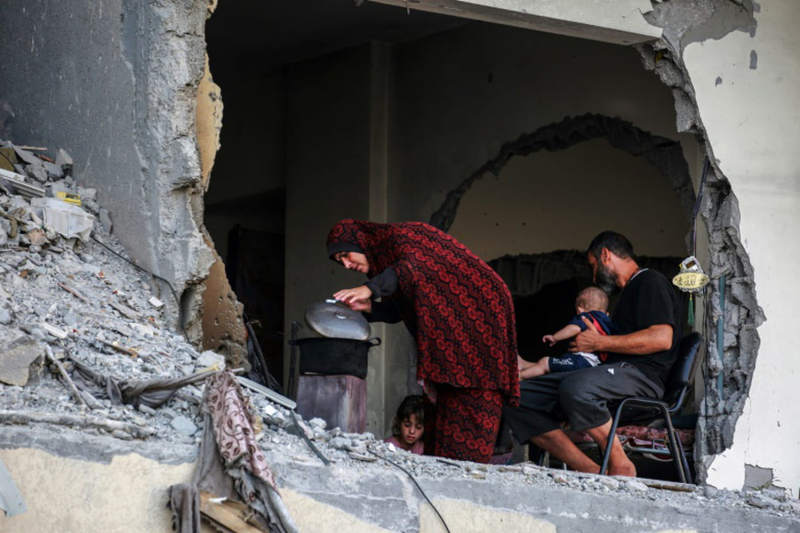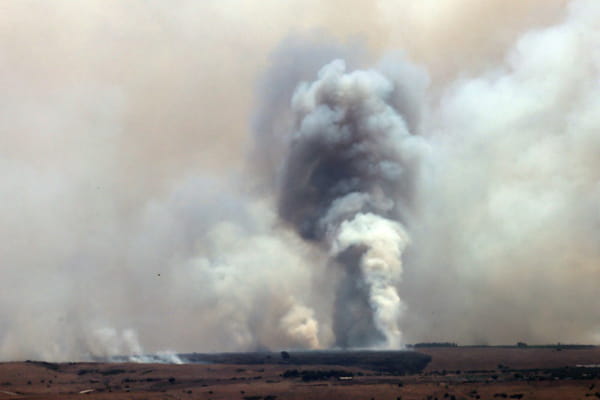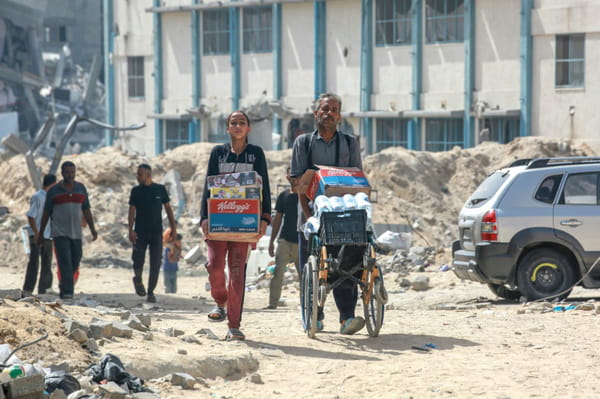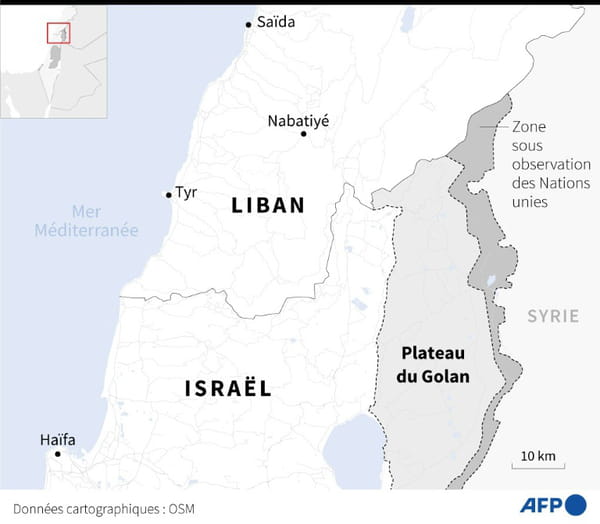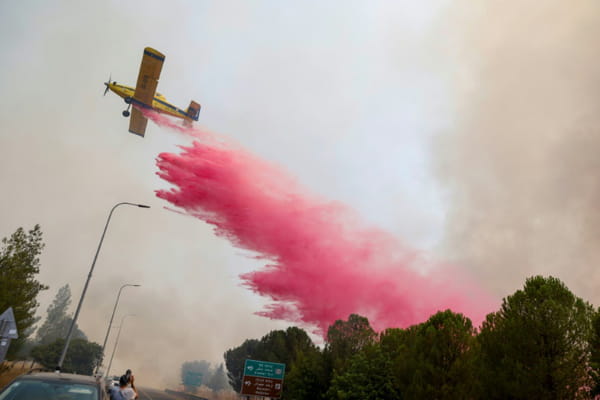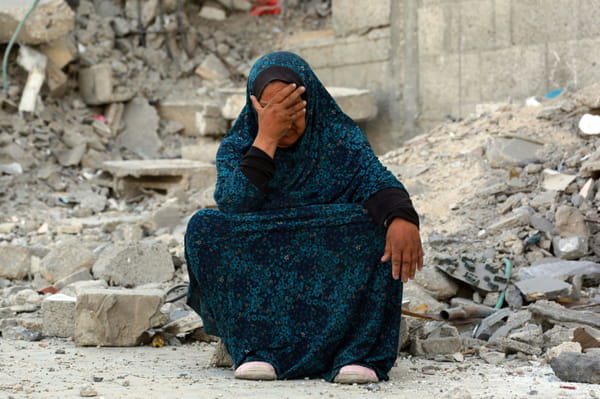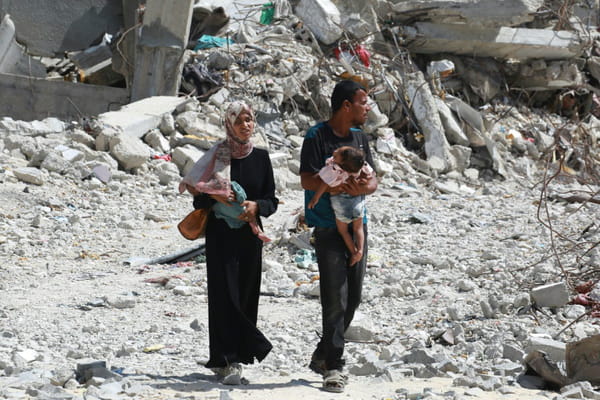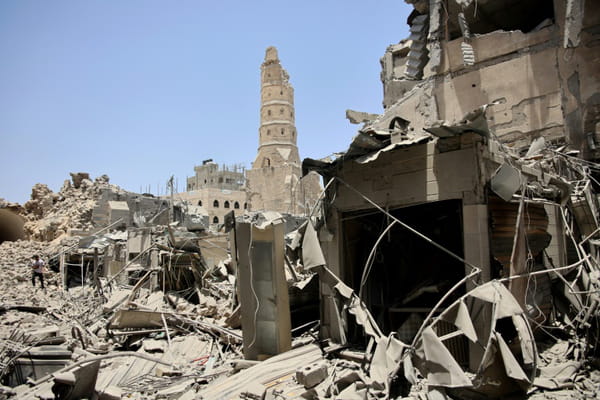An Israeli envoy is expected in Qatar on Friday before new discussions on a ceasefire in the Gaza Strip, where bombings and fighting continue in the north and beyond. Rafah, in the south. Israeli Prime Minister Benjamin Netanyahu on Thursday ordered Mossad chief David Barnea to travel to Qatar after Hamas announced new “ideas” to end the war in the Palestinian territory, triggered on October 7 by the attack of the Islamist movement against Israel. The head of Israeli foreign services is expected in Doha on Friday to meet Mohammed bin Abdulrahman Al Thani, the Prime Minister of Qatar, according to a source close to the negotiations. The date of the meeting is not known. As mediation efforts led by Qatar, the United States and Egypt come up against irreconcilable demands on both sides, the war threatens to take on a regional dimension with daily exchanges of fire on Israel's northern border with Lebanon. Smoke rises after a rocket attack on the Upper Galilee, northern Israel, July 4, 2024 © AFP – JACK GUEZ On Thursday, Lebanese Hezbollah, a powerful Islamist movement allied with Hamas, fired more than 200 explosive rockets and drones into northern Israel and the occupied Syrian Golan Heights. In retaliation, the army announced that it had carried out strikes against “military installations” in southern Lebanon. “In “during the harsh campaign against Lebanon, we established a principle: anyone who harms us is a dead man,” Netanyahu said. A Hamas delegation met with Hezbollah leader Hassan Nasrallah to discuss the situation on the ground and upcoming negotiations, a Palestinian movement official told AFP on Friday. Palestinians carrying water and food through a ruined street in Khan Younes, southern Gaza Strip, July 5, 2024 © AFP – Bashar TALEB The war in Gaza has also led to an outbreak of violence in the West Bank, occupied by Israel, where the Palestinian Authority announced on Friday the death of five Palestinians in an Israeli raid in Jenin. – Roads destroyed – The border area between Lebanon and Israel © AFP – Patricio ARANA, Sabrina BLANCHARD, Nalini LEPETIT-CHELLA The war broke out on October 7, when Hamas commandos carried out an unprecedented attack in southern Israel, which resulted in the deaths of 1,195 people, most of them civilians, according to a count from AFP established from official Israeli data. Of 251 people kidnapped during the attack, 116 are still hostages in Gaza, among whom 42 are dead, according to the army. In response, the Israeli army launched an offensive on the Gaza Strip which has so far left 38,011 dead, mostly civilians, according to data from the Gaza government's Ministry of Health , led by Hamas. An Israeli plane tries to put out fires caused by rockets launched from southern Lebanon into northern Israel, July 4, 2024 © AFP – Jalaa MAREY After advancing from the north, the army launched a ground operation on May 7 in Rafah, a border town with Egypt, then presented as the last stage of the war. But fighting has resumed in several regions that the army had said it controlled, notably in Shujaiya, an eastern district of Gaza City, in the north, where the army has been carrying out a ground operation supported by bombings since June 27. On Friday, new fighting broke out in Shujaiya between Israeli soldiers and Palestinian fighters, according to a Hamas source. A Palestinian woman sits on rubble covering her face with her hand in Khan Younés, in the south of the Gaza Strip, July 4, 2024 © AFP – Bashar TALEB In the south, the army issued an evacuation order on Monday in the east of Rafah and Khan Younes, which raised fears of new large-scale operations and forced dozens of people to flee. thousands of Palestinians, seeking shelter and food. Witnesses reported Israeli artillery fire and deadly airstrikes in Khan Yunis and Rafah on Friday , where ground combat took place. “Teams are walking long distances carrying bodies because of the destruction of roads which makes it difficult for ambulances to access,” Civil Defense official Mohammed Al Mughair told AFP. A Palestinian couple holding their children walks amid destruction in Khan Younes, in the south of the Gaza Strip, on July 4, 2024. © AFP – Bashar TALEB In total, 1.9 million Gaza residents, or 80% of the population, are now displaced, according to the UN, across the besieged territory. The World Health Organization warned Friday that the shortage of fuel, recurring since the start of the war, posed a “catastrophic” risk to Gaza's health system. < p>– “Much to do” – On Thursday, Mr. Netanyahu's office announced that the prime minister had informed US President Joe Biden “of its decision to send a delegation to continue negotiations for the release of the hostages”, while recalling Israel's determination “to put an end to the war only if all its objectives are met”. A Palestinian walks amid the rubble of buildings destroyed or damaged by Israeli bombings, including the Omari mosque in Gaza City, July 4, 2024 © AFP – Omar AL-QATTAA The latest elements provided by Hamas “could provide the necessary basis to reach an agreement”, estimated a senior American official, while warning that there remained “much to be done” and that it would be ” difficult”. Benjamin Netanyahu says he wants to continue the war until the destruction of Hamas, considered a terrorist organization by the United States, the European Union and Israel , and the release of all the hostages. Hamas, for its part, is demanding a definitive ceasefire and an Israeli withdrawal from Gaza. Thursday, thousands of people demonstrated again in Jerusalem against the government and to demand the return of the hostages. “We know that two-thirds of the population understands that Netanyahu is not qualified to lead us, not in normal times and certainly not in times of emergency “, launched Shikma Bressler, one of the leaders of the movement. All rights of reproduction and representation reserved. © (2024) Agence France-Presse